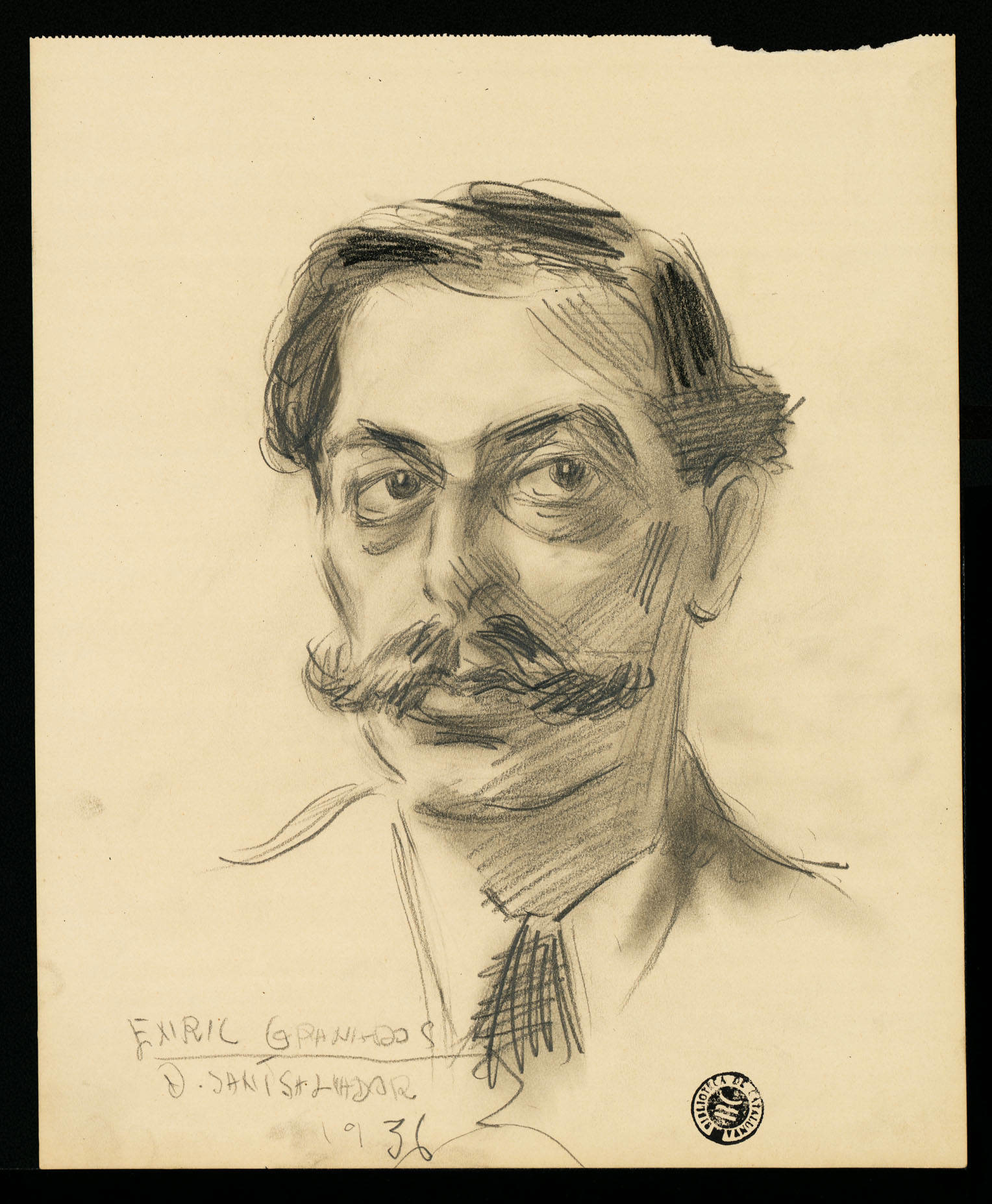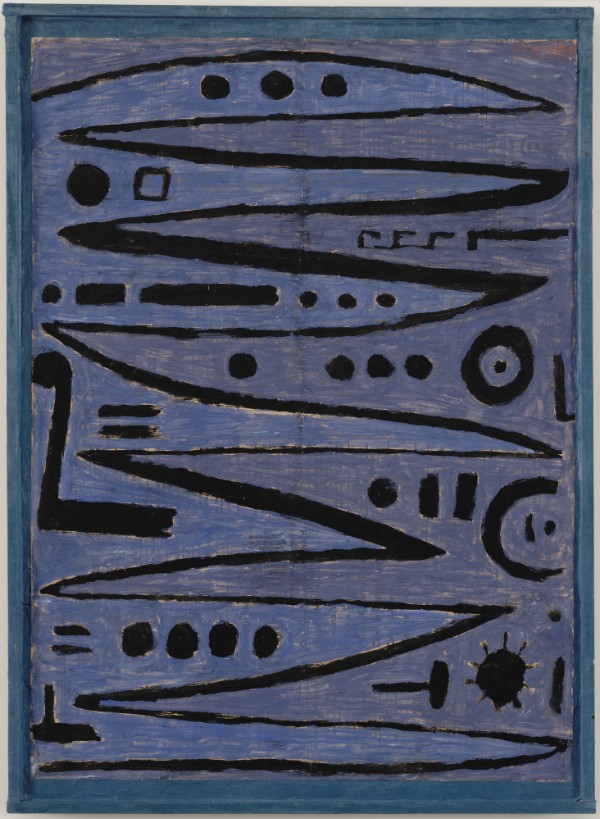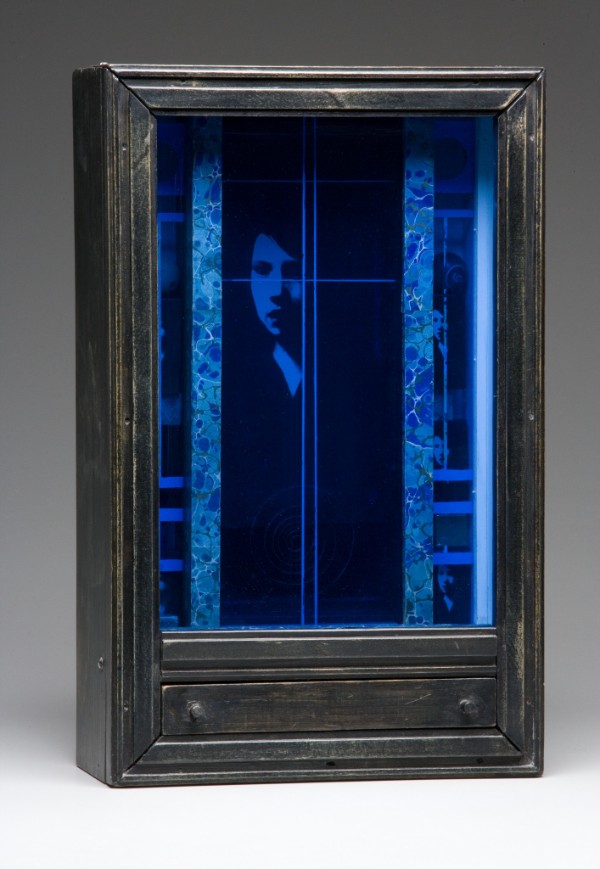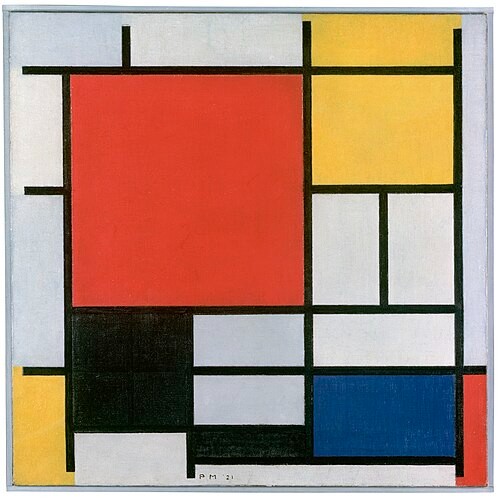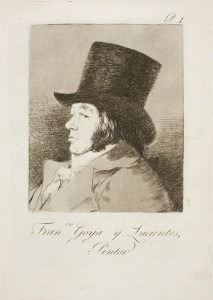
Goya: Capricho № 1: Francisco Goya y Lucientes, pintor (Francisco Goya y Lucientes, painter)
Other engravings by Goya from his series Los Caprichos were similarly influential on the Italian composer Mario Castelnuovo-Tedesco (1895-1968) to write a set of pieces for the guitar entitled 24 Caprichos de Goya, Op. 195, completing the work in 1961. Of the 80 images in the Los Caprichos set, Castelnuovo-Tedesco set music to 23 of them.
Los Caprichos (The Caprices) were created in 1797 and 1789 and published in 1799. The light-hearted title, Los Caprichos (The Caprices) is contradicted by the dark imagery. Goya used the images to condemn contemporary Spanish society by laying bare its follies and foolishness. He rails against superstition, the ignorance and inabilities of the various members of the ruling class, the actions of the clergy, pedagogical short-comings, marital mistakes and the decline of rationality. Despite the seriousness of his criticism, his informal artistic style in the pictures keeps the set from being overly severe and foreshadows the modernist movement of a century later.
The first caprice is a portrait of the painter, shown as authoritative, well-dressed, and debonair.
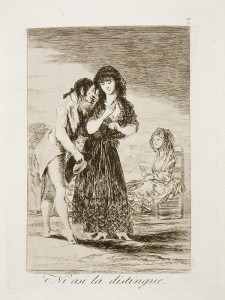
Goya: Capricho № 7: Ni asi la distingue (Even so he cannot make her out)
Castelnuovo-Tedesco: 24 Caprichos de Goya, Op. 195: No. 1. Francisco Goya y Lucientes, Pintor (Francisco Goya y Lucientes, Painter) (Zoran Dukić, guitar)
The problems of society and of telling a person’s position in the world comes to the fore in the picture Ni asi la distingue (Even so he cannot make her out) where the man in center of the picture cannot tell, quite, what kind of woman he is talking to.
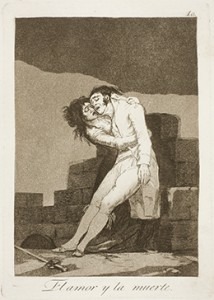
Goya: Capricho № 10: El amor y la muerte (Love and death)
Castelnuovo-Tedesco: 24 Caprichos de Goya, Op. 195: No. 4, Ni asi la distingue (Even so he cannot make her out) (Zoran Dukić, guitar)
The bitter end of a duel is depicted in El amor y la muerte. A girl holds a dying man whose discarded dueling sword lies at his feet.
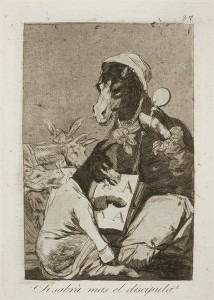
Goya: Capricho № 37: ¿Si sabrá más el discipulo? (Perhaps the pupil knows better?)
Castelnuovo-Tedesco: 24 Caprichos de Goya, Op. 195: No. 6. El amor y la muerte (Love and death) (Zoran Dukić, guitar)
Goya’s sarcastic and biting commentary on education takes the form of a teacher and a student, but it is the student who is teaching his master the alphabet and both are donkeys.
Castelnuovo-Tedesco takes on modern music theory after a bit of braying. He starts with a twelve-tone construction in the style of the Second Viennese School before converting it all into a non-Schoenbergian Gavotte, then going on to write musical inversions and retrogrades in the 12-tone style. In addition to the Gavottes, two Musettes are added, mocking modern dissonance.
Castelnuovo-Tedesco: 24 Caprichos de Goya, Op. 195: No. 15. ¿Si sabra mas el discipulo? (Perhaps the pupil knows better?) (Zoran Dukić, guitar).
One of the most famous images from the series might actually be a self-portrait of Goya. A sleeping man is surrounded by the things of nightmares: evil owls, a lynx, and many shadowy bat-like creatures.
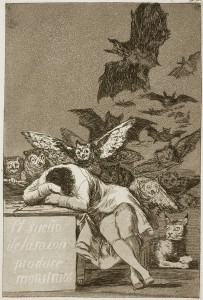
Goya: Capricho № 43: El sueño de la razón produce monstruos (The sleep of reason produces monsters)
Castelnuovo-Tedesco: 24 Caprichos de Goya, Op. 195: No. 18. El sueno de la razon produce monstruos (The sleep of reason produces monsters) (Zoran Dukić, guitar)
We may not hear the monsters in the music, but the set of five variations puts us inside the tormented man’s head, as each new variation takes the same old theme and brings it around again and again and again.
Castelnuovo-Tedesco’s picture of Goya’s world through the medium of the guitar made use of an inspired choice of instrument. Each picture is a tiny world, reflecting the things Goya found in his world, and each guitar movement also creates a tiny world. In addition, the use of compositional ideas from the time of Goya (theme and variations, gavottes, and tangos) even if in a 20th-century manner, brings his world closer to ours.

